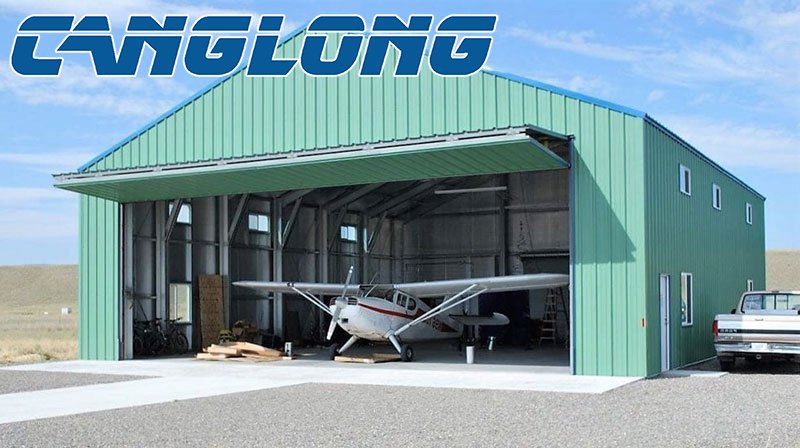What are the key factors in the metal hangar building design?
The metal hangar building is one of the key facilities to protect the aircraft, which can provide safe and reliable protection for the aircraft under severe weather conditions. Therefore, the design and construction of metal hangar building is crucial. In this article, we'll explore some key aspects of metal hangar design.
First, the design of metal hangar buildings should take into account the size and shape of the aircraft. The length and wingspan of the aircraft need to be taken into account to ensure that the aircraft can be fully accommodated in the hangar. In addition, designers also need to consider the height of the aircraft to ensure that the tail and wings of the aircraft will not be hit by the roof of the metal hangar.
Secondly, the construction of metal hangars needs to take into account the choice of metal materials. Metal is a strong, durable material that offers good protection. When choosing a metal, factors such as its strength, weight, corrosion resistance, and malleability should be considered. Currently, commonly used metal materials include steel, aluminum, and magnesium. Steel is a very strong material, but it is heavy. Aluminum is a lightweight material, but relatively low in strength. Magnesium is a medium-strength material, but it has low corrosion resistance. Therefore, when choosing a metal material, the trade-off of various factors should be considered.

Third, the design of metal hangar should consider the entry and exit of aircraft. Architects should ensure that the size and height of the hangar entrance is large enough so that aircraft can enter and exit easily. In addition, the entry and exit of the hangar should take into account the space around the aircraft to ensure that the aircraft can enter and exit safely.
Fourth, metal hangar should be designed with fire protection in mind. Fires can have serious consequences due to components such as fuel tanks and electrical systems inside the aircraft. Therefore, metal hangar building should use fire-resistant materials, such as fire-resistant coatings and insulation materials, to reduce the risk of fire. In addition, there should be fire extinguishing equipment and emergency evacuation routes, so that fire extinguishing and evacuation can be carried out in time in the event of a fire.
Finally, metal hangar should be designed with environmental protection in mind. Metal is a recyclable material, therefore, environmental protection should be considered when constructing metal hangar buildings. Architects should choose recyclable metal materials and design suitable waste disposal schemes to reduce environmental impact.
In summary, the design and construction of a metal hangar requires consideration of several factors. Designers should consider the size and shape of the aircraft, choose appropriate metal materials, consider the entry and exit of the aircraft, take fire prevention measures, and protect the environment. By comprehensively considering these factors, a high-quality, safe and reliable metal hangar building is built.





